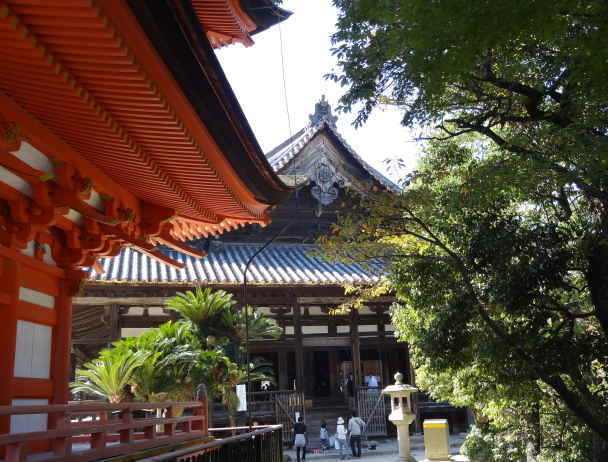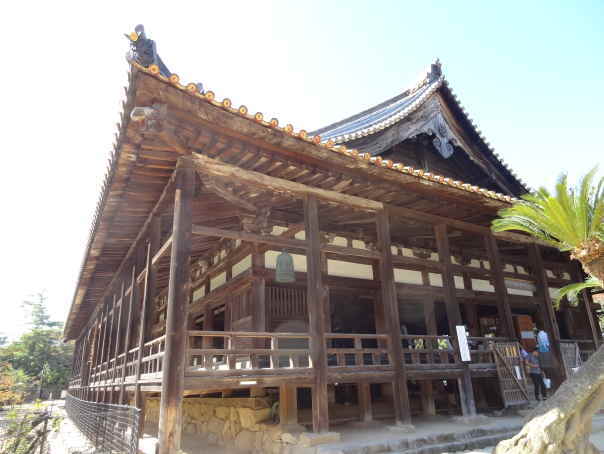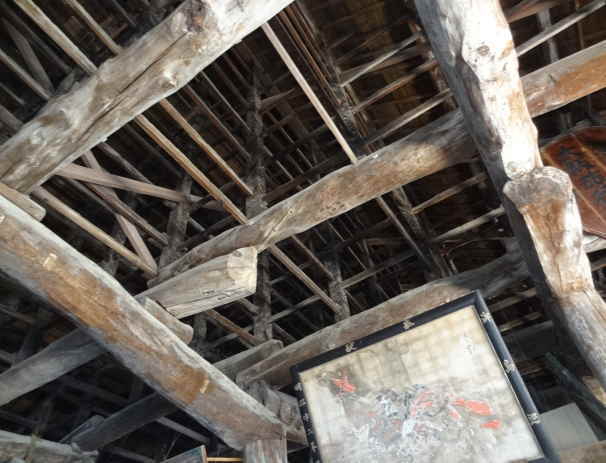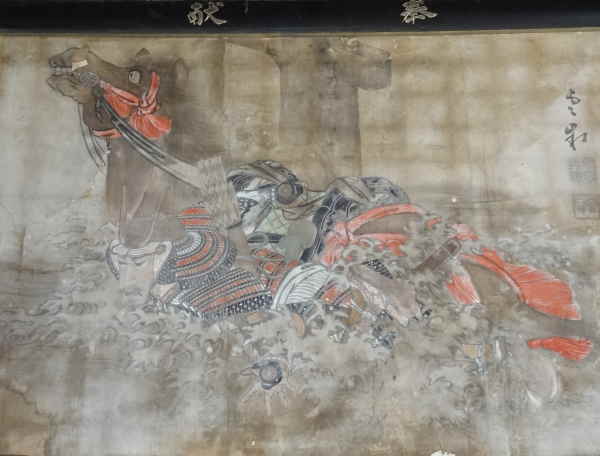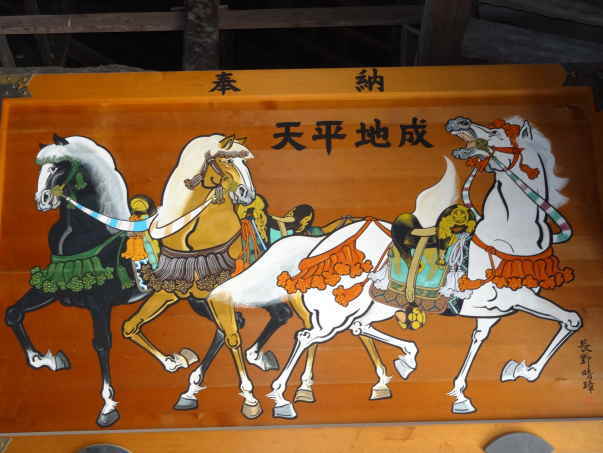|
The Senjo-kaku palacefs construction began in 1587 by
Toyotomi Hideyoshi who was one of the unifiers of Japan in the 16th century.
He intended to hold Buddhist memorial services here (the chanting of senbu-kyo,
one thousand sutras, could be held every month) for all the dead soldiers
from various wars he had started.
But eleven years later, during construction, he passed
away, and it still remains in its unfinished shape today.
If the palace had been completed, we would be able to
see the magnificent culture of the Azuchi Momoyama era.
If you look closely at the gilded roof tiles, you can
imagine his dynamic character.
The Senjo-kaku palace had been used as a temple up to
the Meiji era, and dedicated to Amida Buddha and subordinate Buddhist saints,
Anan and Kasho.
After early Maiji era, the Buddhist statues were moved
to another temple and it has been used as a shrine since then.
(The new Meiji government ordered the separation of Shintoism and
Buddhism to construct an Emperor centered state, because it was believed
Emperors were God. )
Senjo means 1000 tatami mats, but Senjo is kind of an
exaggeration, maybe itfs real meaning is just great or big means.
To tell the truth, the palace can hold only 875 tatami
mats.
The Senjo-kaku also has been called Toyokuni Shrine
since the early Meiji era.
After Shintoism and Buddhism separated, Toyotomi
Hideyoshi and his chief retainer, Kato Kiyomasa, were enshrined here, so it was
called Toyokuni shrine.
|
